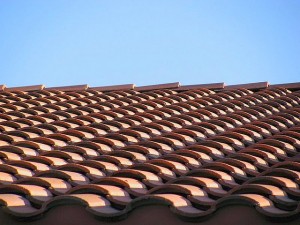The Best Ways to Patch up Your Roof
This entry was posted on Jun 8, 2014 by speedy-bedIn the summer months it is easy to take the condition of our roofs for granted, however this is the time we should be identifying, and rectifying any possible faults, or damages that have, or may occur, in the winter months that are to follow.
SAFETY – Safety is paramount when identifying, and repairing, any faults on a roof, and its surrounding areas. On occasions it is possible to detect problems, without having to physically step foot on your roof, however not all faults are visible from ground level. When working at height it is vital that safety precautions are taken to avoid serious injury. The correct safety equipment should always be used such as ladders which should be used on a sturdy, and level floor, and PPE worn such as a hard hat, and safety harness when required.

SLATES/TILES – It is very common on slated, or tiled roofs, for cracks to appear overtime therefore causing leaks to occur. Cracked, or damaged tiles, and slates can be easily fixed by simply removing, and replacing the broken slate or tile. If this is not the cause of the problem, it would be advisable to contact a specialist for them to have a look, and give their verdict.
CHIMNEY – Water penetration can happen on chimney stacks, generally occurring to the base of the stack where the lead flashing is situated. The usual cause of this problem is that the lead has come away from the brickwork, or it is damaged, and needs replacing. This can be easily repaired by simply placing the lead back into position, and bending it into shape. An extra precaution you can take, for extra peace of mind, is to finish off by using a lead sealant on top of the lead work.
Another thing we should bear in mind is that unused chimneys, are often a great place for wildlife to make nest, so why not block yours’ off, by using a vented cowling.
FASCIA/GUTTERS – whether your fascia just needs sprucing up, or is damaged, it can be easily replaced by removing the old one, and re-capping over the timber barge board with fascia, or fully replace the whole lot by using a magnum board. Over time guttering can become blocked, and joints can start to leak. By removing the blockages you will be able to detect if there are any underlying faults with it such as leaking joints. Leaking joints again are simple to fix by just removing the old joints, and replacing with new ones.
By following these simple steps not only will your roof look fresh, but will also help to prevent damage and premature weathering.

